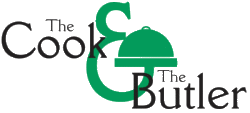
Tel: 020 7620 1818 email: cookandbutler@btconnect.com
The Worshipful Company of Cutlers
www.cutlerslondon.co.uk
Surgical Award Dinner
March 12th 2025, Cutlers' Hall, London
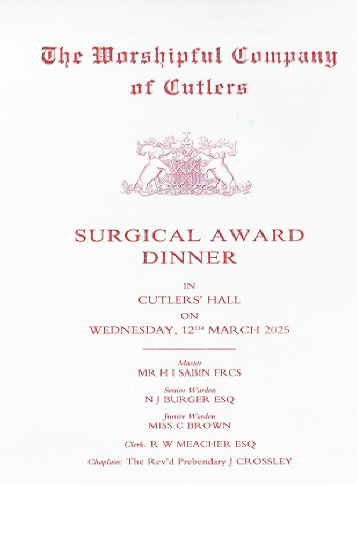
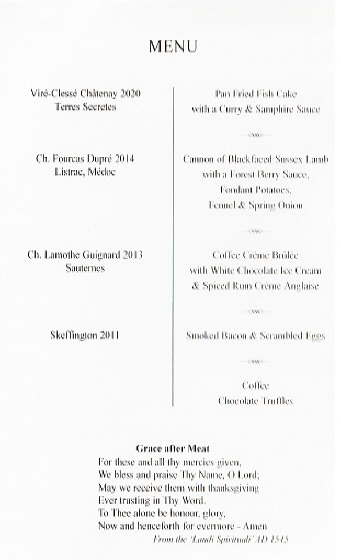
![]()
Autum Court Dinner
October 9th 2024, Cutlers' Hall, London
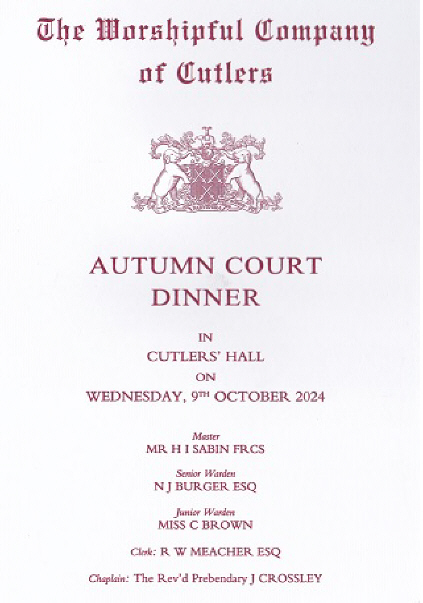
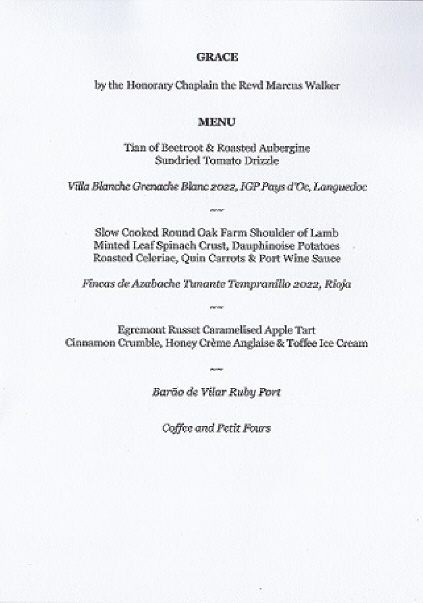
![]()
Captain Boot's Dinner
July 10th 2024, Cutlers' Hall, London
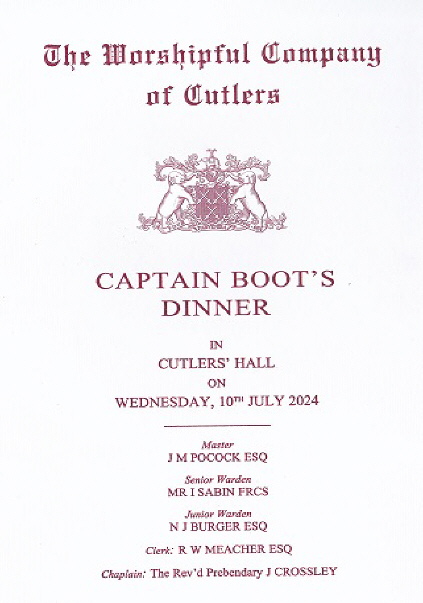
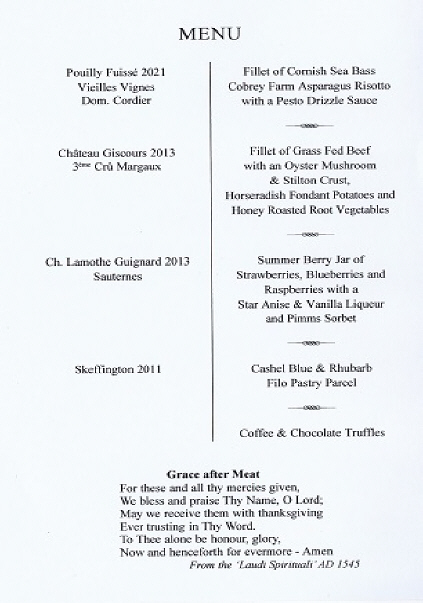
![]()
Surgical Award Dinner
March 13th 2024, Cutlers' Hall, London
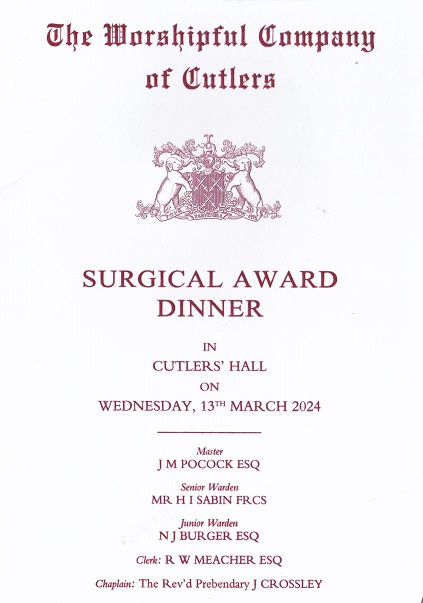
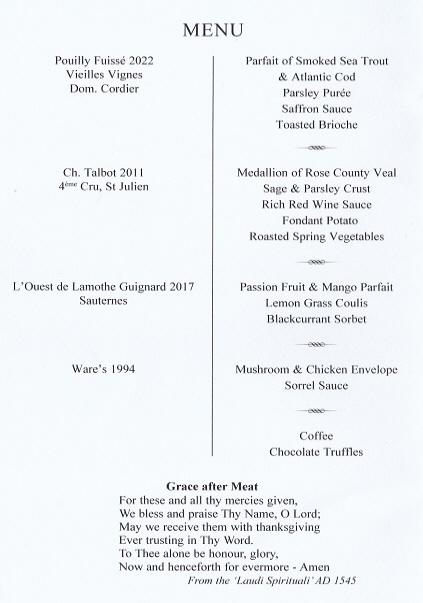
![]()
The Feast of The Boar's Head
December 6th 2023, Cutlers' Hall, London
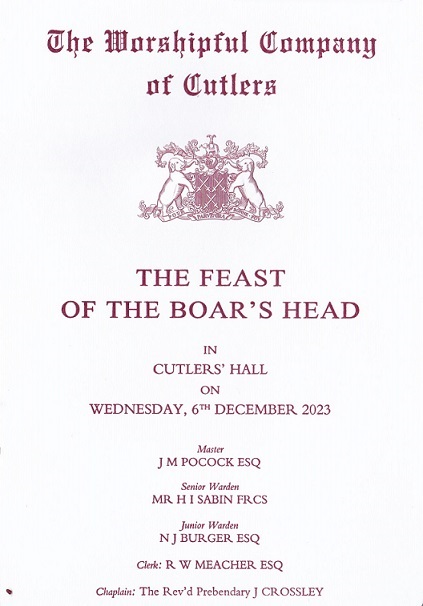
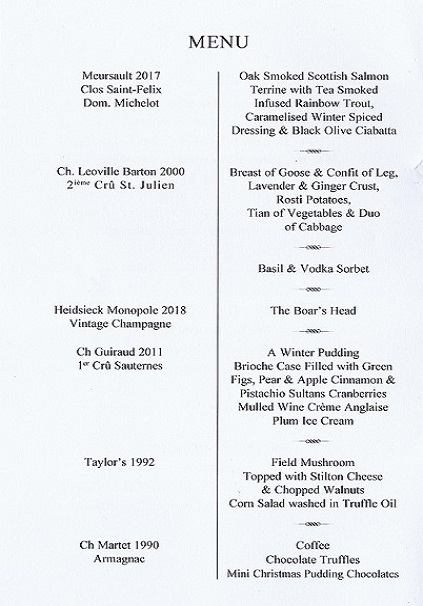
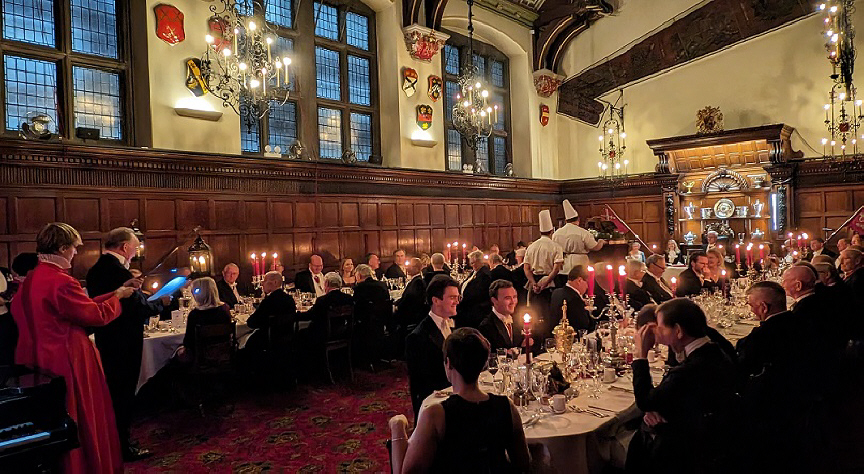
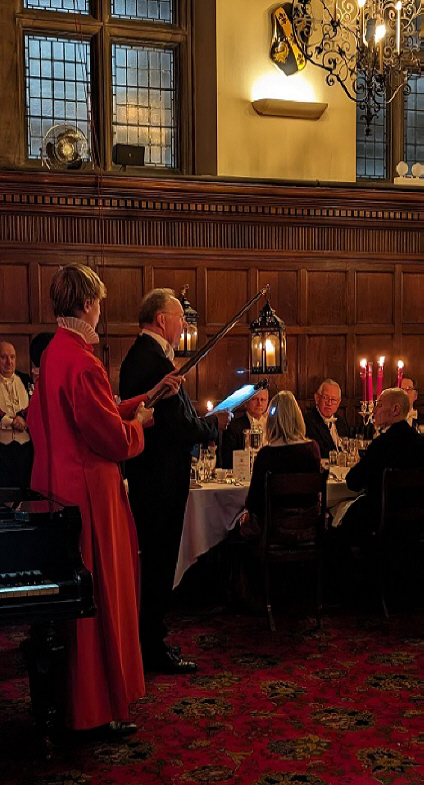
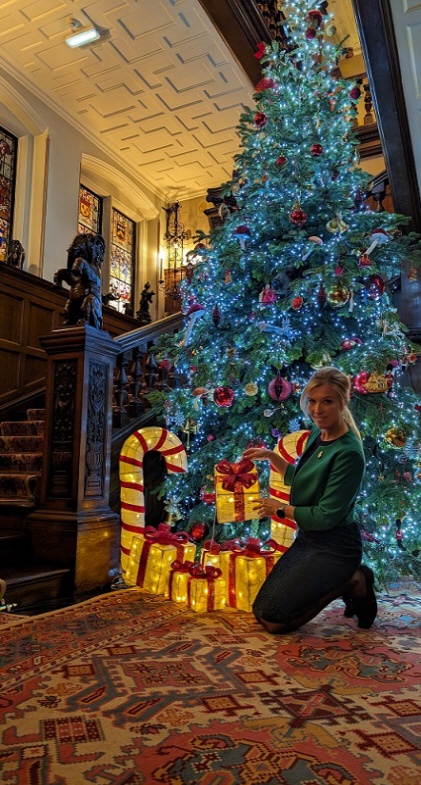
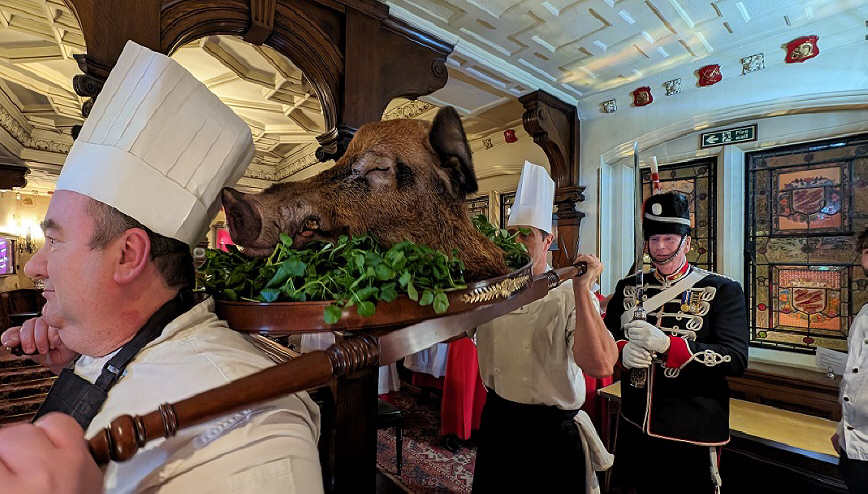
![]()
The Feast of The Boar's Head
December 7th 2022, Cutlers' Hall, London
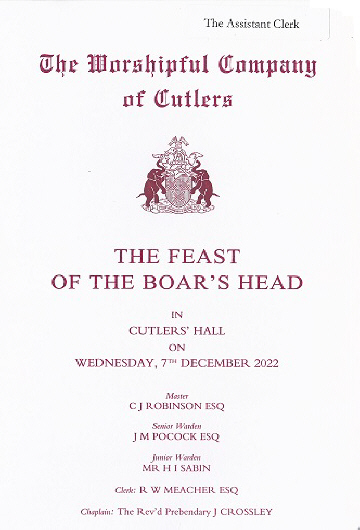
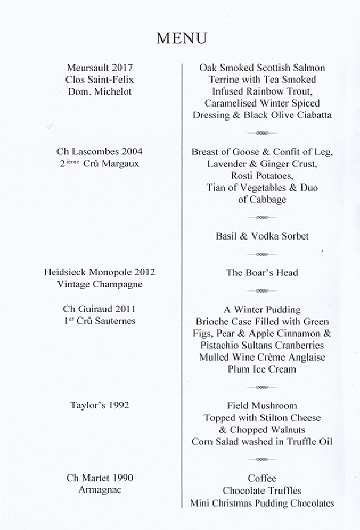
![]()
Founders Feast
November 4th 2022, Cutlers' Hall, London
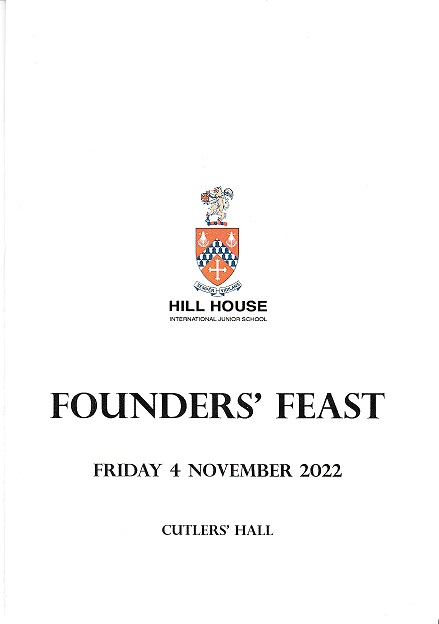
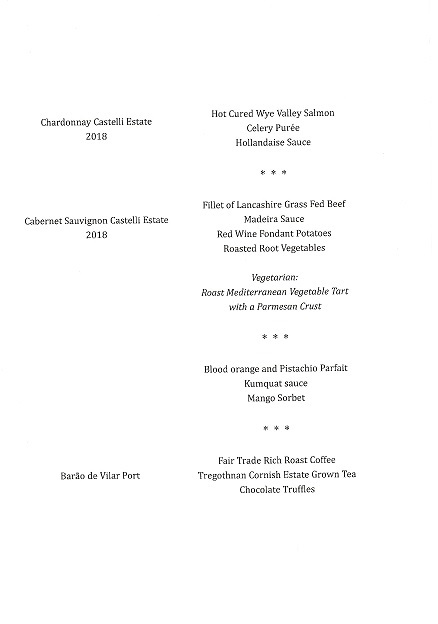
![]()
The Worshipful Company Of Cutlers
March 9th 2022, Cutlers' Hall, London
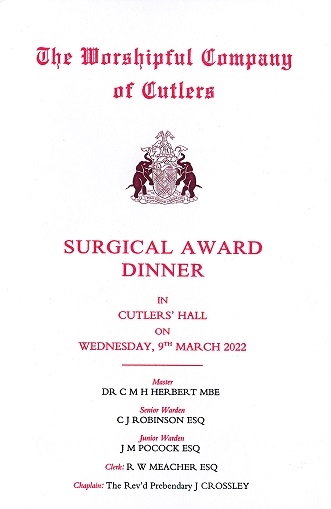
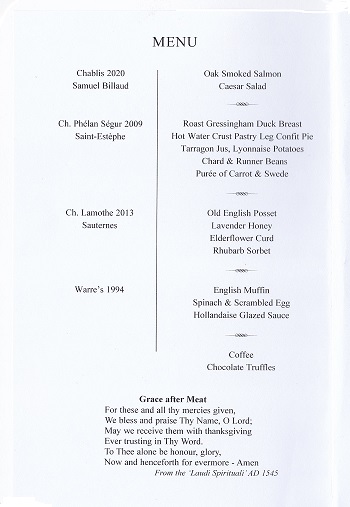
![]()
The Worshipful Company Of Stationers & Newspaper Makers Court Dinner
February 1st 2022, Cutlers' Hall, London

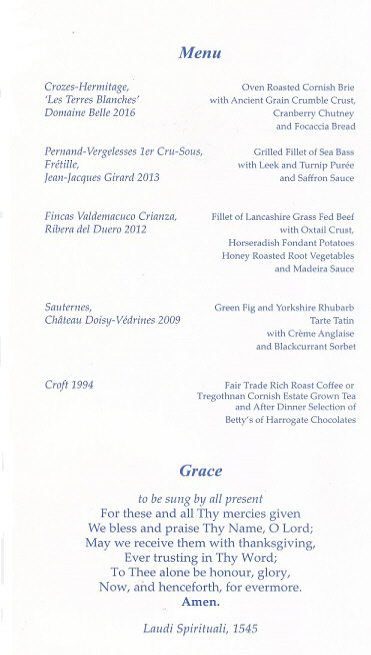
![]()
The Red Balloon Giving Dinner
October 21st 2021, Cutlers' Hall, London
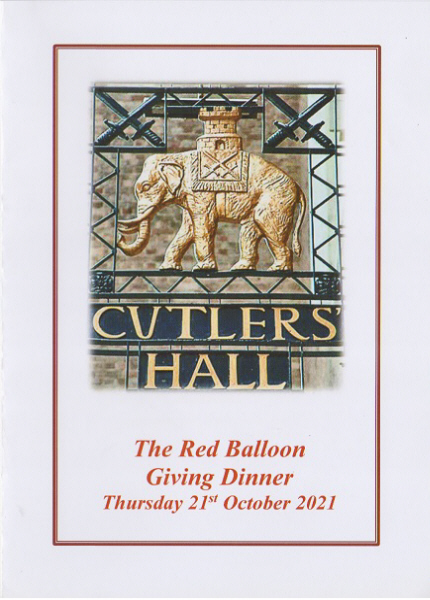
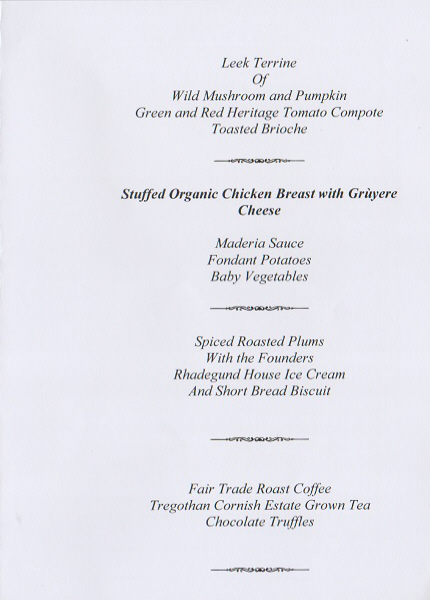
Autumn Court Dinner
October 13th 2021, Cutlers' Hall, London
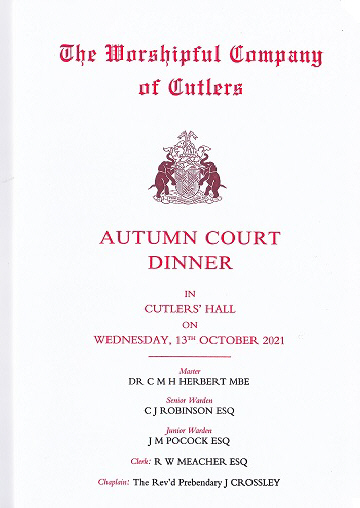
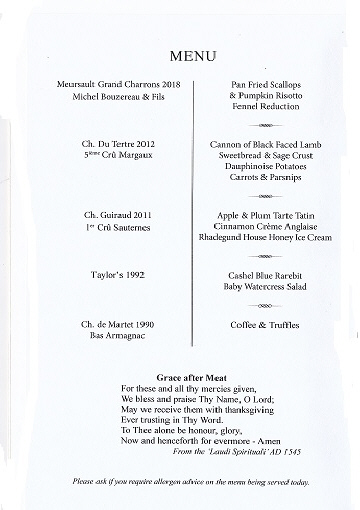
![]()
The Feast of the Board's Head
December 2019, Cutlers' Hall, London
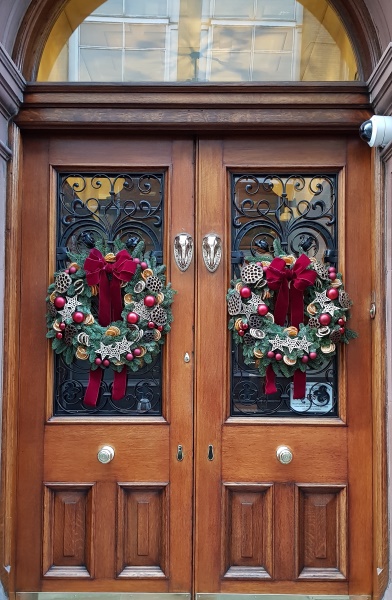
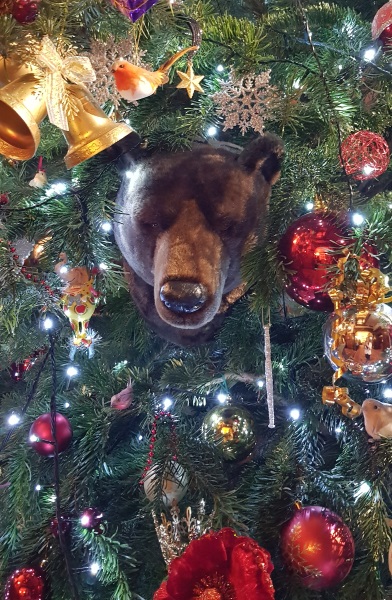
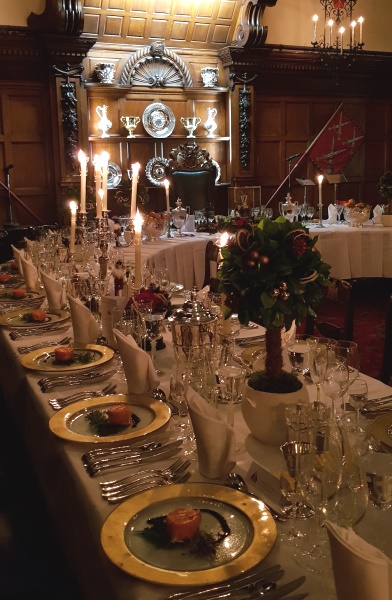
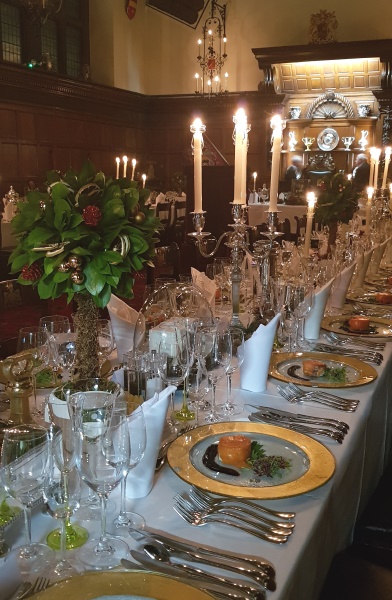
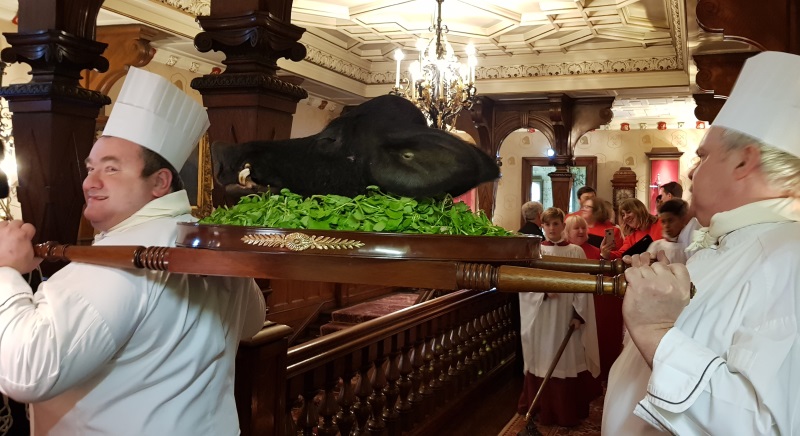
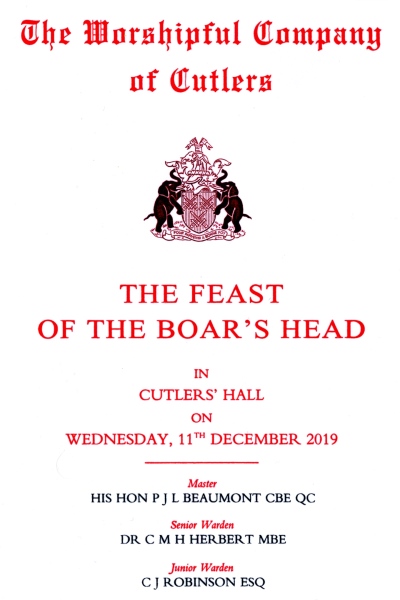
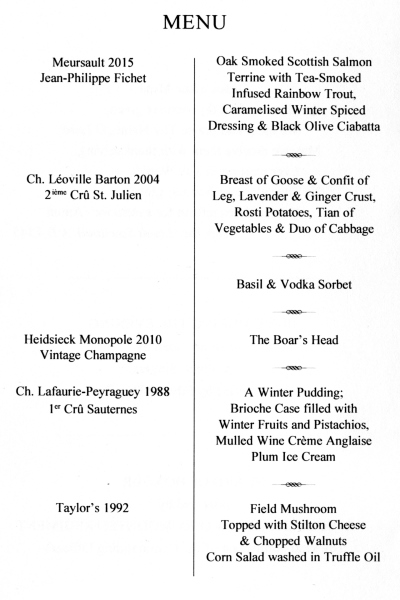

Surgical Award Dinner
March 2019, Cutlers' Hall, London
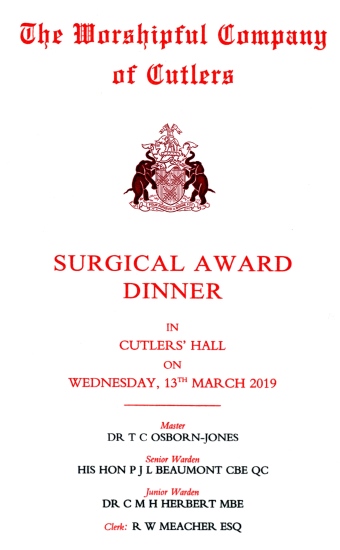
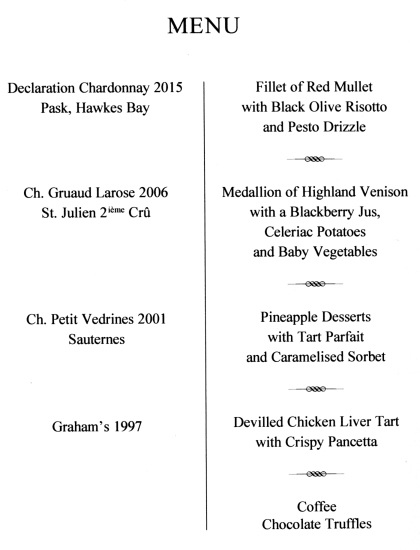

Captain Boot's Dinner
July 2018, Cutlers' Hall, London
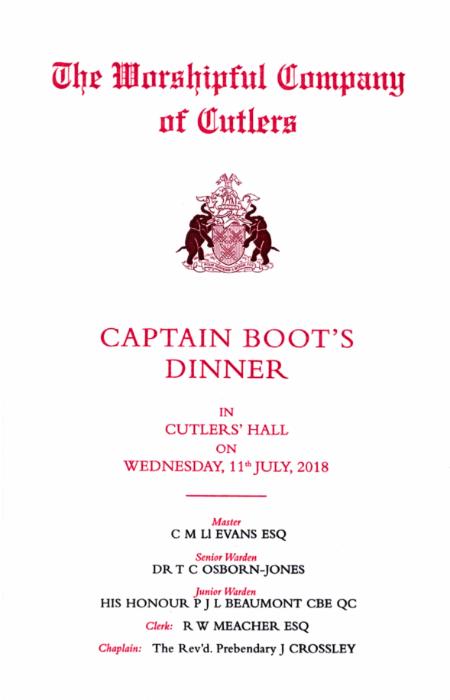
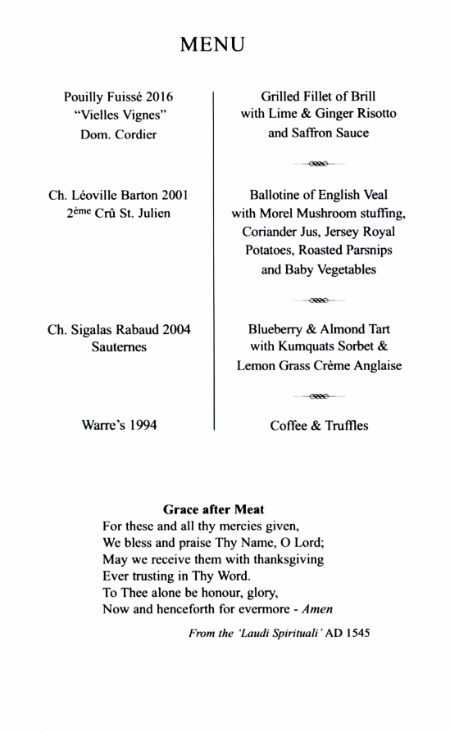

Surgical Award Dinner
March 2018, Cutlers' Hall, London
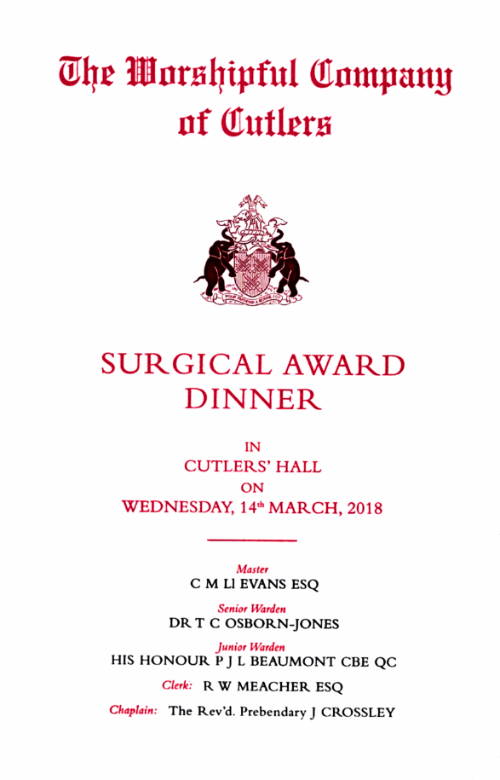
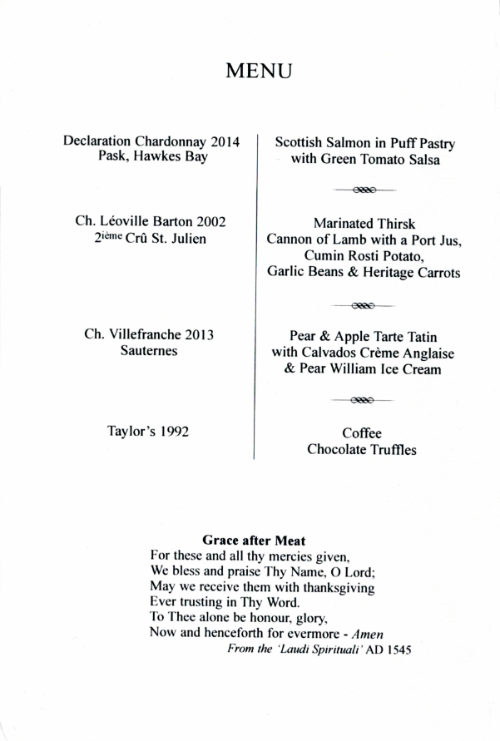

The Feast of the Board's Head
November 2017, Cutlers' Hall, London
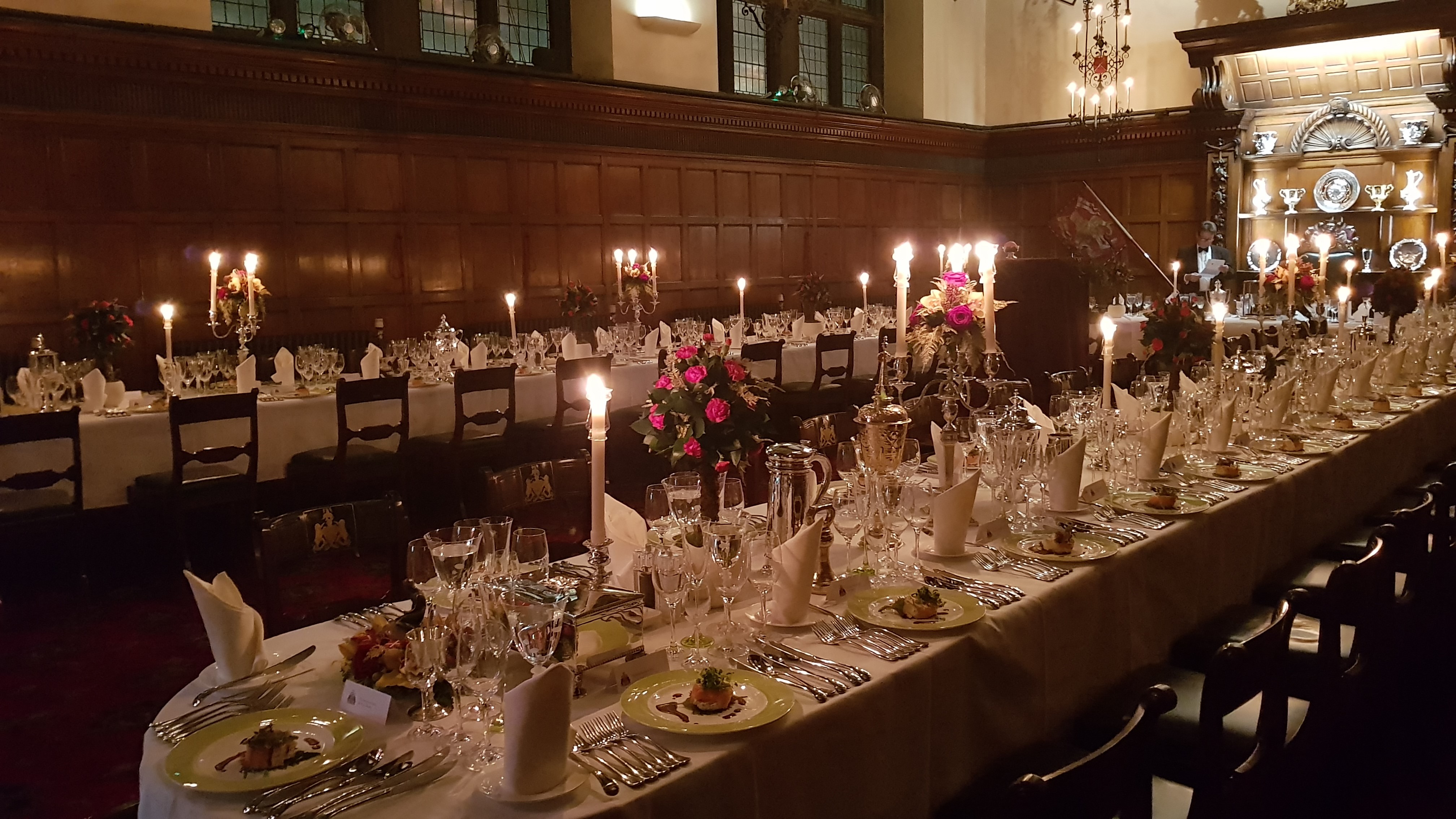
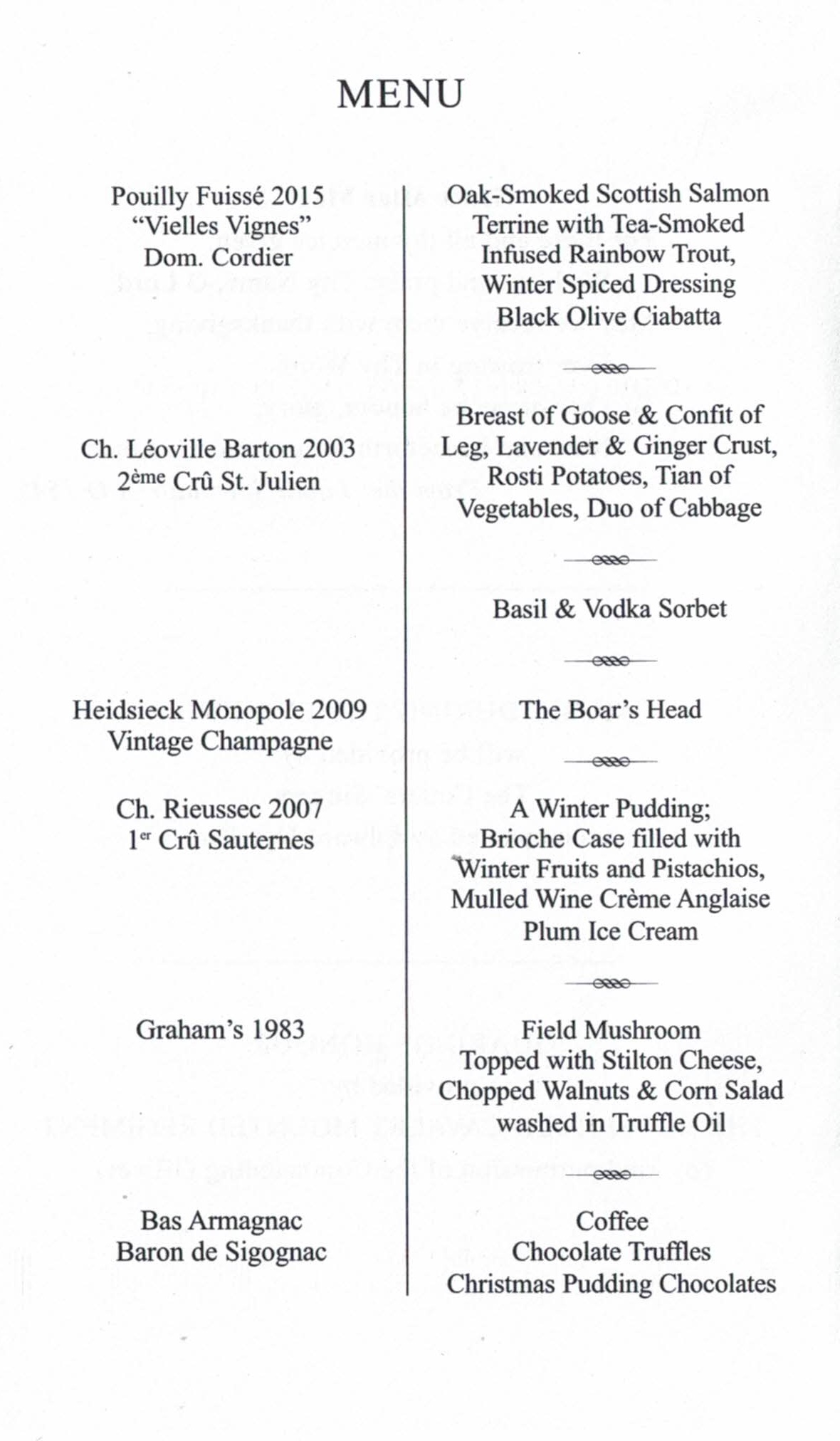
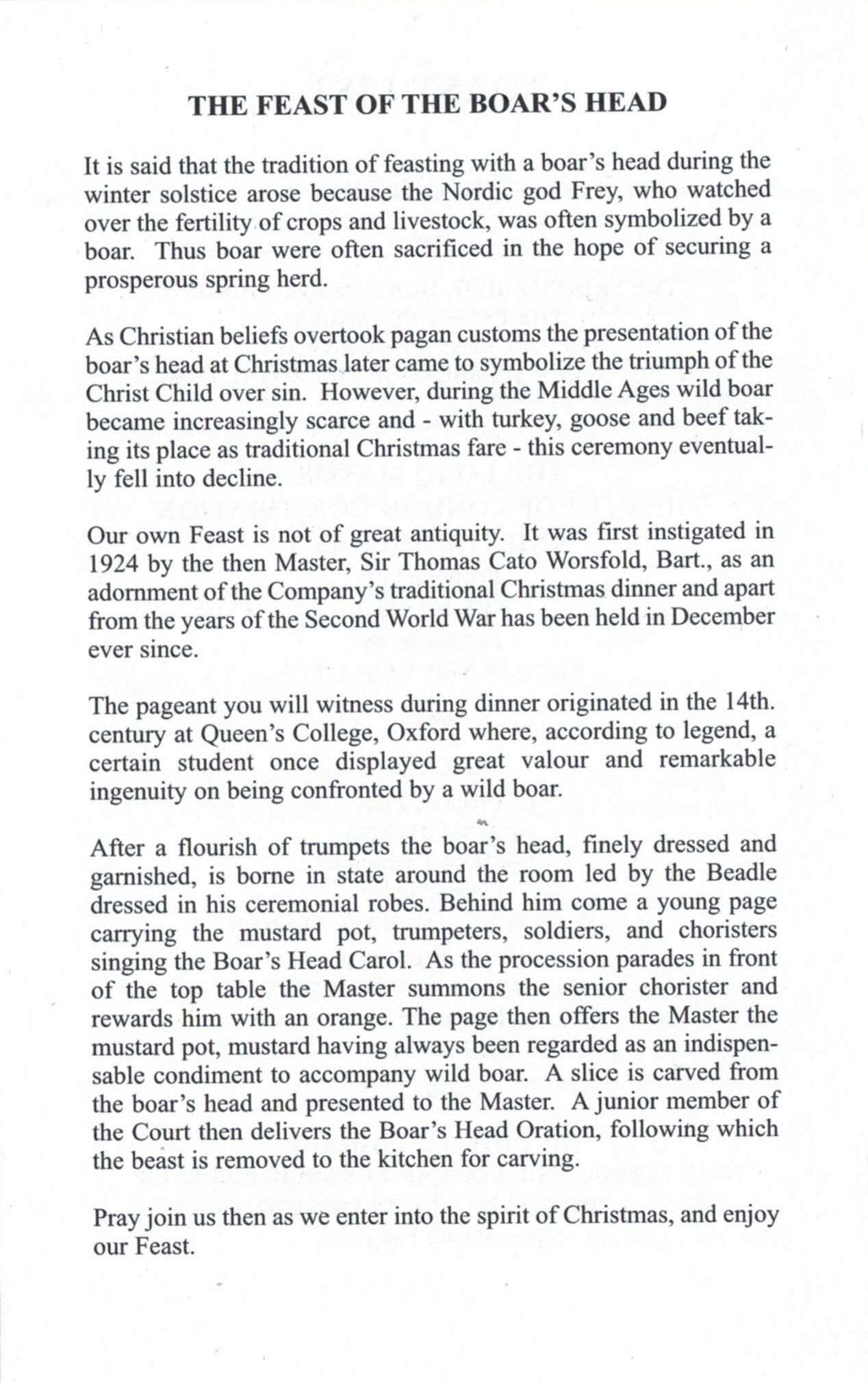
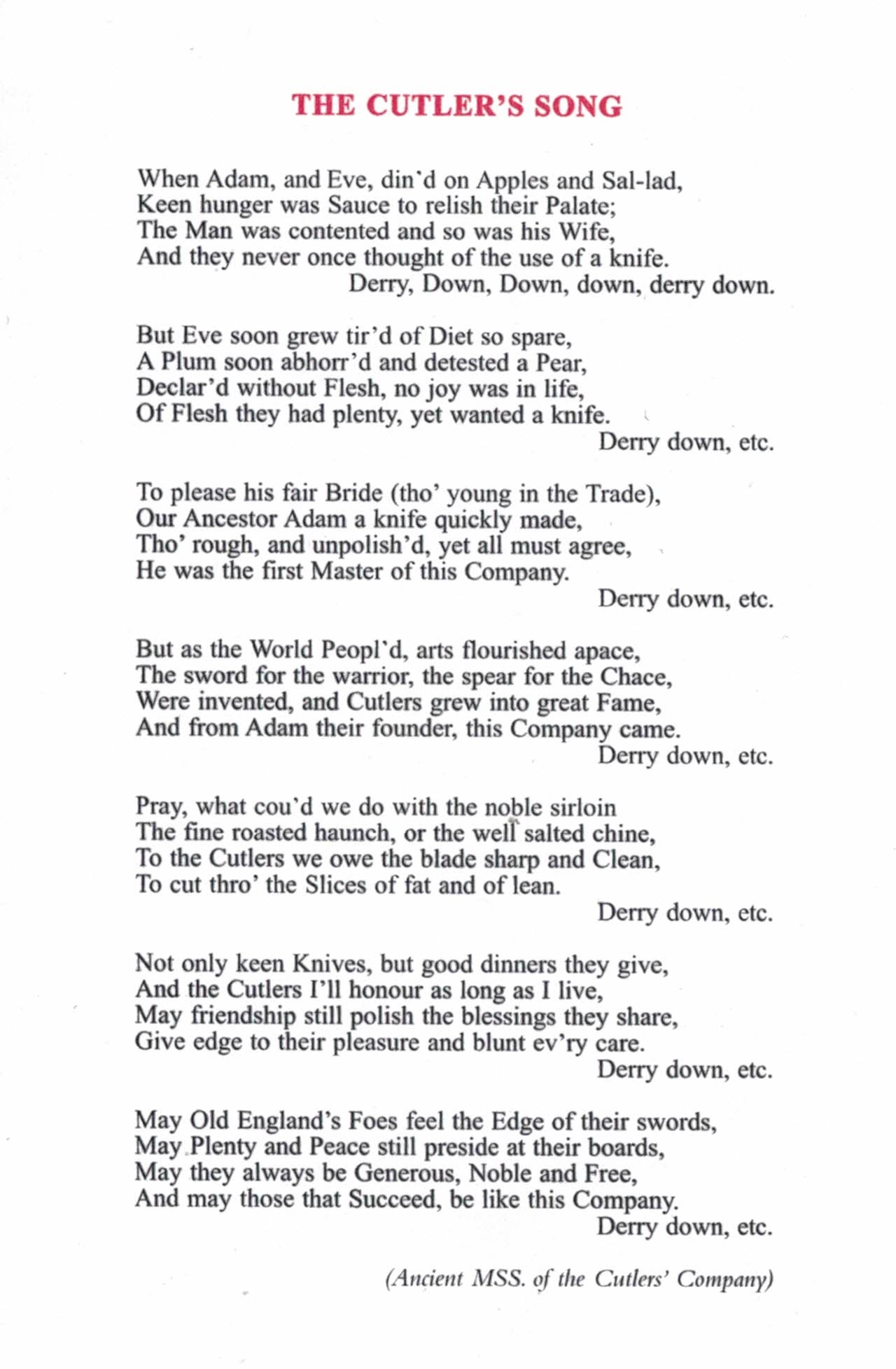

Stewards' Dinner
November 2017, Cutlers' Hall, London
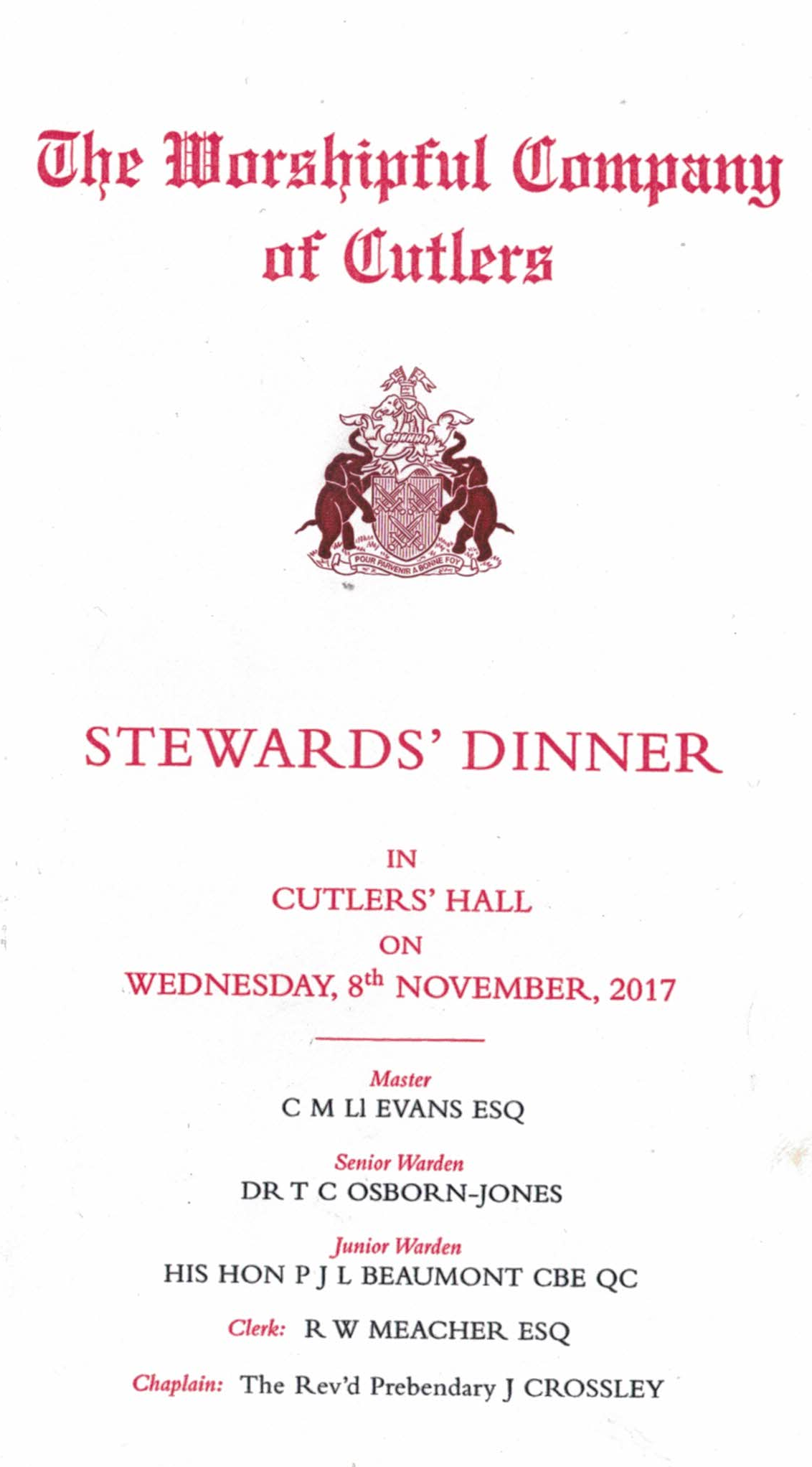
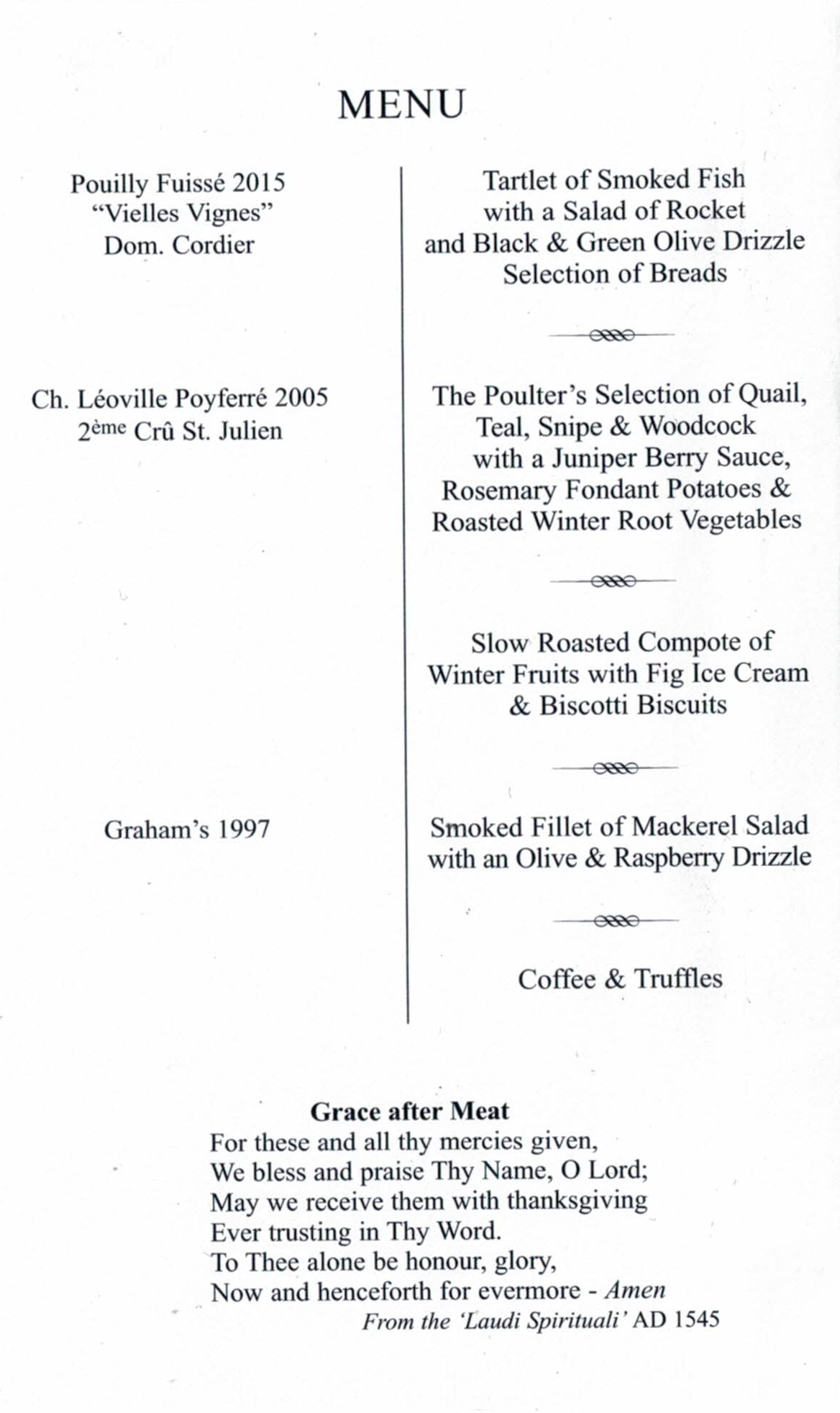
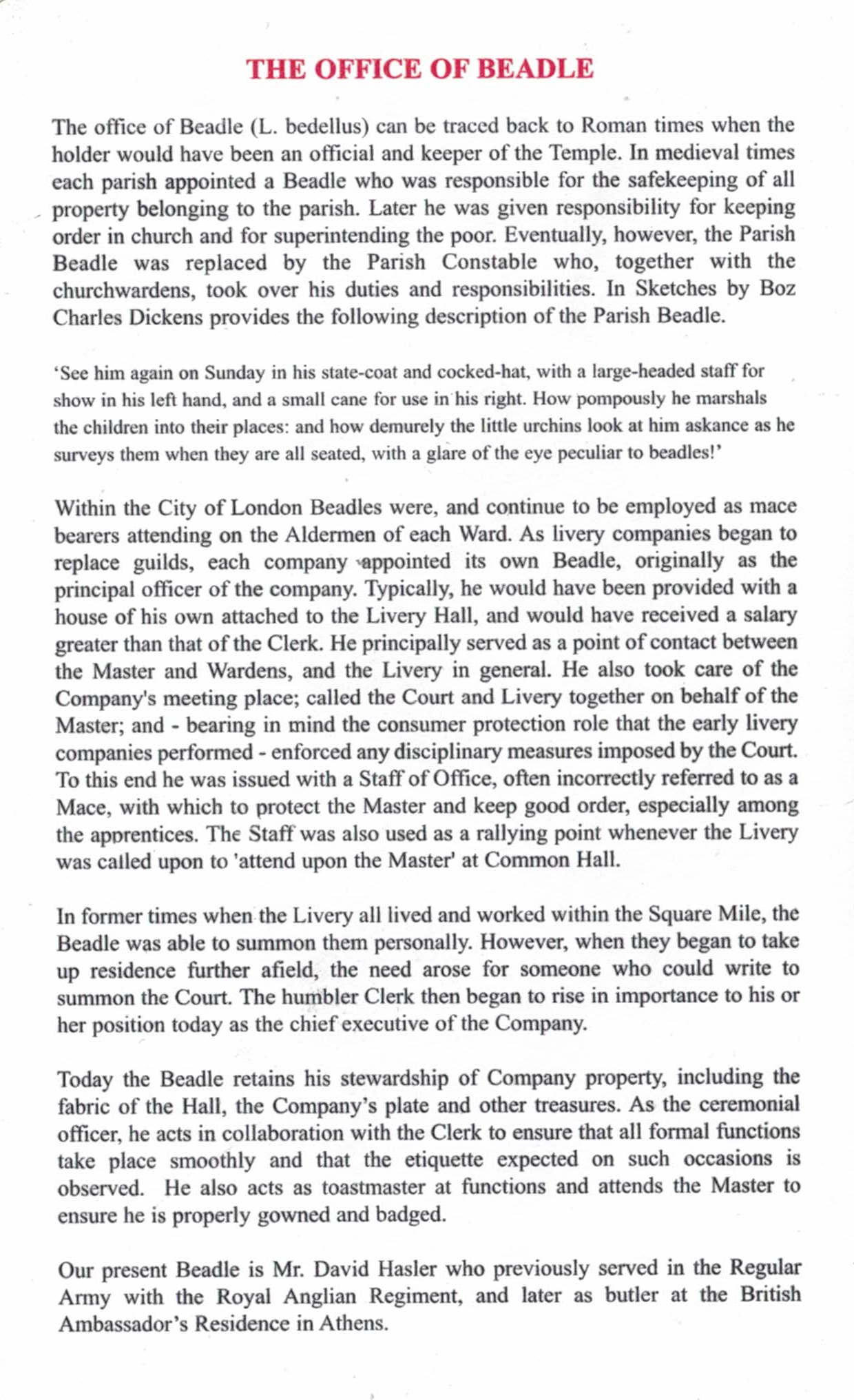

Surgical Award Dinner
March 2017, Cutlers' Hall, London
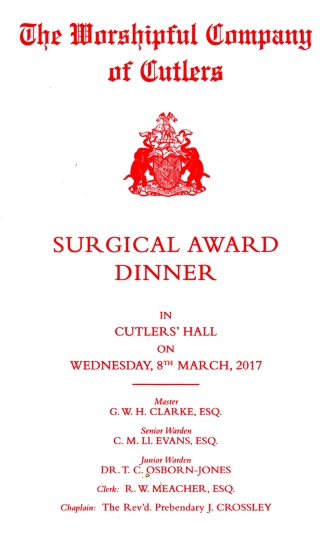
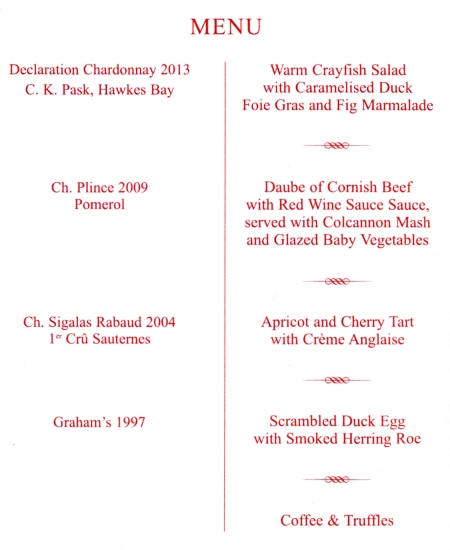

The Feast of the Boar's Head
December 2016, Guildhall, City of London
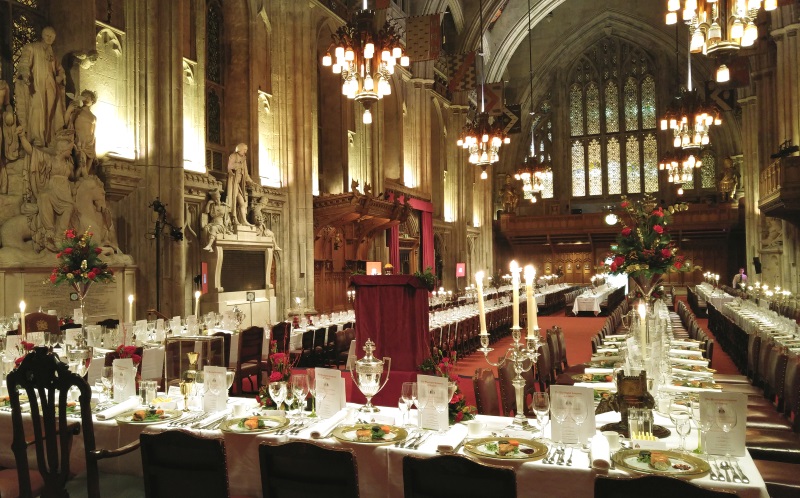
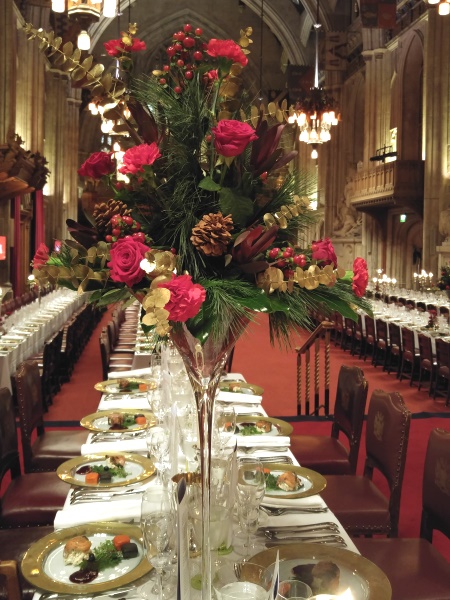
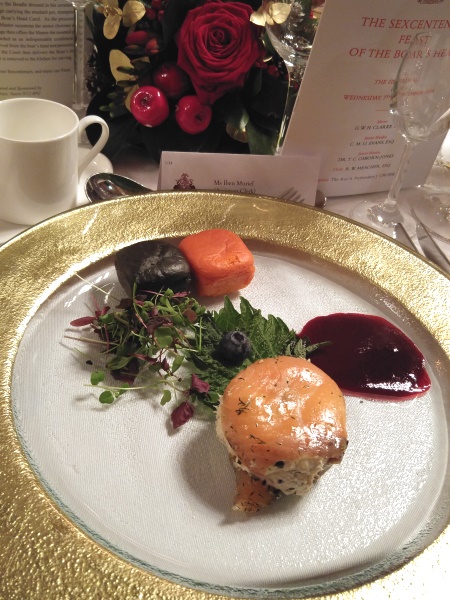
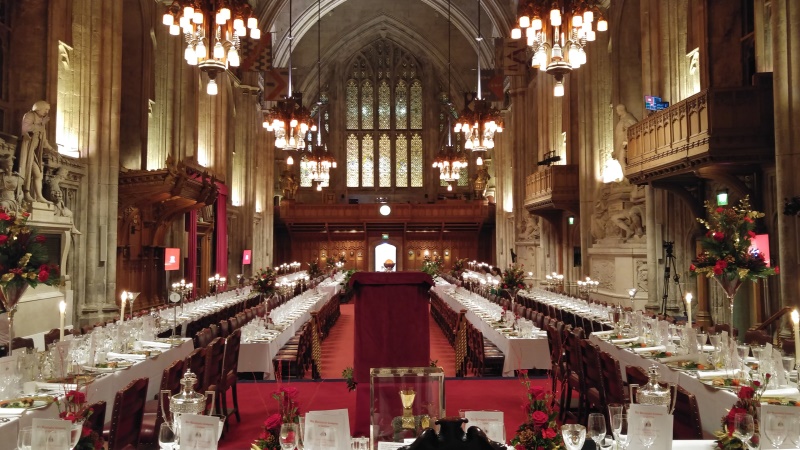
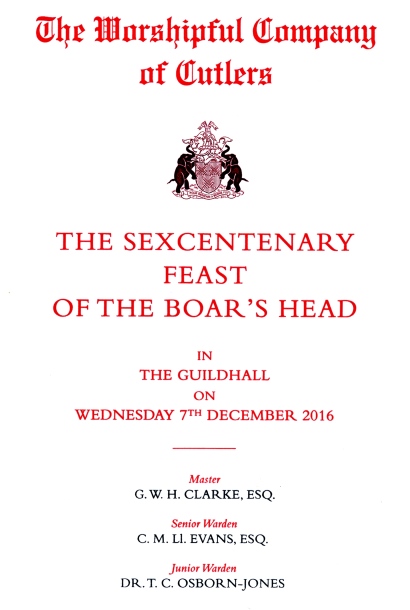
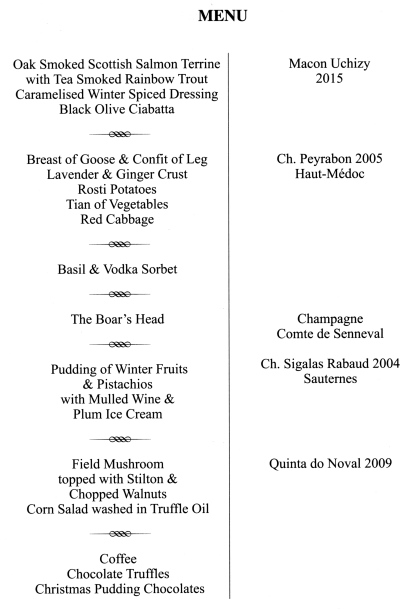

Surgical Award Dinner
March 2016, Cutlers' Hall, London
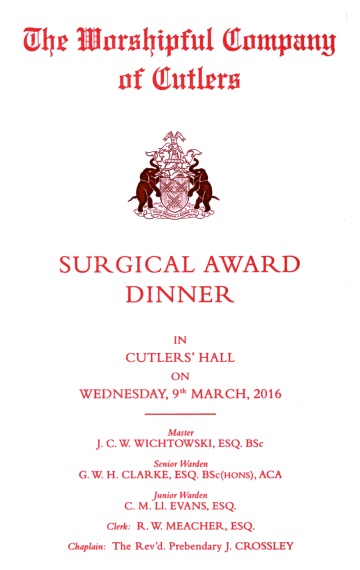
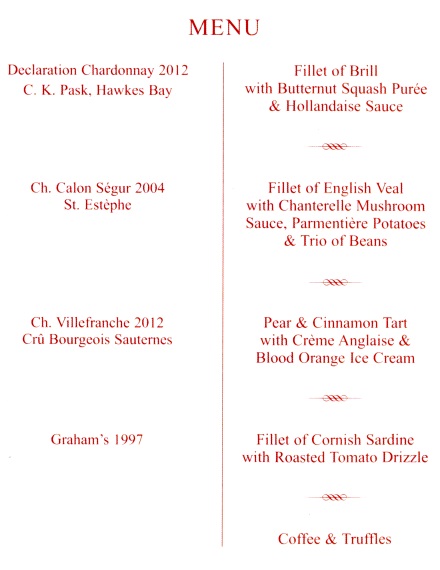
THE CUTLERS’ SURGICAL PRIZE 2013
The Cutlers' Surgical Prize was instituted in 1981 by the late Past Master Tony Clarke to promote innovation in the design or application of surgical instruments and surgical techniques. This annual award is open to anyone who has performed outstanding work in the field of instrumentation or technical development in any branch of surgery. Entries are judged by representatives of the specialist surgical associations, in conjunction with the Royal College of Surgeons, who recommend which of the entrants should receive the award. This year's prize, comprising The Clarke Medal and g2,500 in cash, has been awarded to Mr. Pankaj Chandak, BSc(Hons) MBBS MRCSEng FRAS, Mr. Nick Byrne MPhys MSc, Dr. Andrew Coleman MSc PhD FIPEM CSci MBA, Mr. Nicos Kessaris BSc MSc FRCS(Gen) and Professor Nizam Mamode BSc MD FRCS FRCS(Gen), who have developed a technique utilising 3D printing to assist with complex paediatric renal transplantation.
THE CUTLERS' FELLOWSHIP IN SURGERY
The Cutlers' Fellowship in Surgery was instituted to mark the new Millennium, The Fellowship is open to recently qualified surgeons at St. Bartholomew's and The Royal London Hospitals, who wish to visit hospitals outside the United Kingdom, in order to study surgical techniques that are relevant to their chosen specialism. This year's fellowship has been awarded to Mr, Samer-ul Haque BSc MBBS MRCS Dip(Lap Surg) PhD, a Speciality Training Registrar, who intends to visit the Saint Antoine Hospital in Paris to study advanced techniques for the management of inflammatory bowel disease.

The Feast of the Boar's Head
December 2015, Cutlers' Hall, London
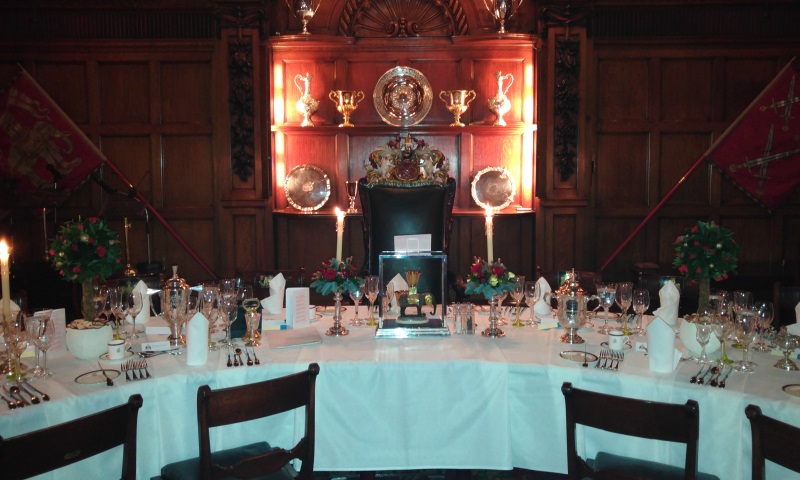
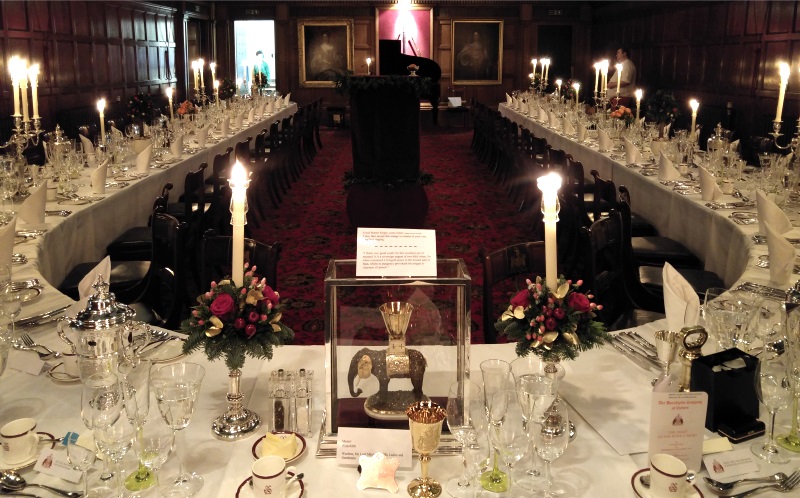
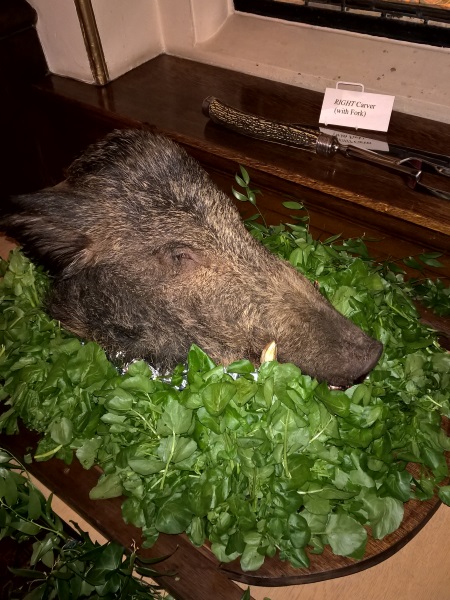
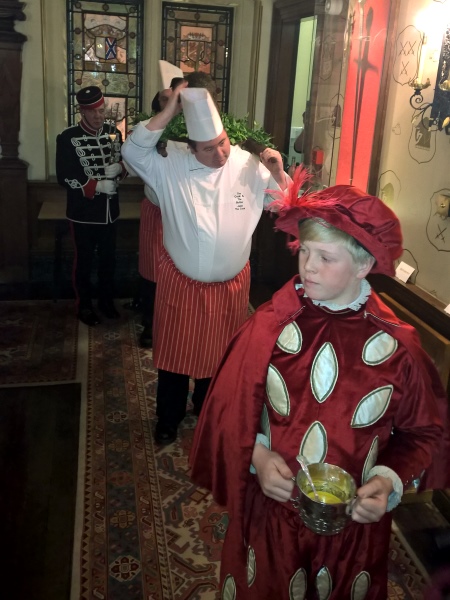
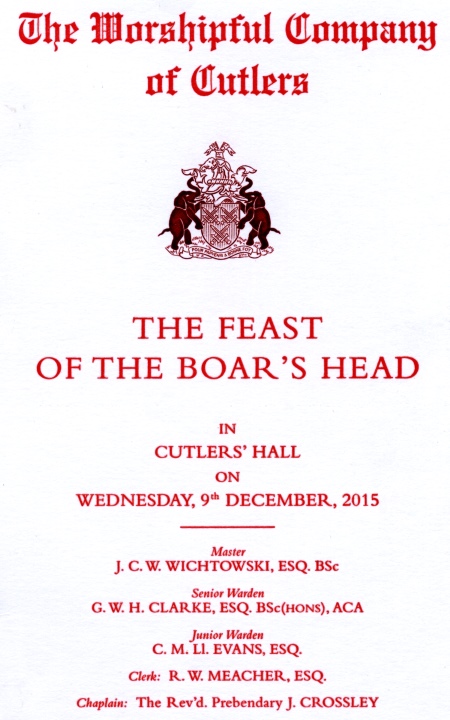
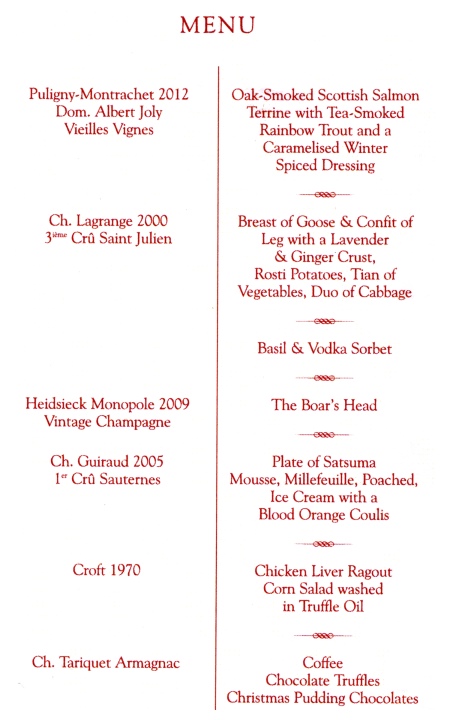
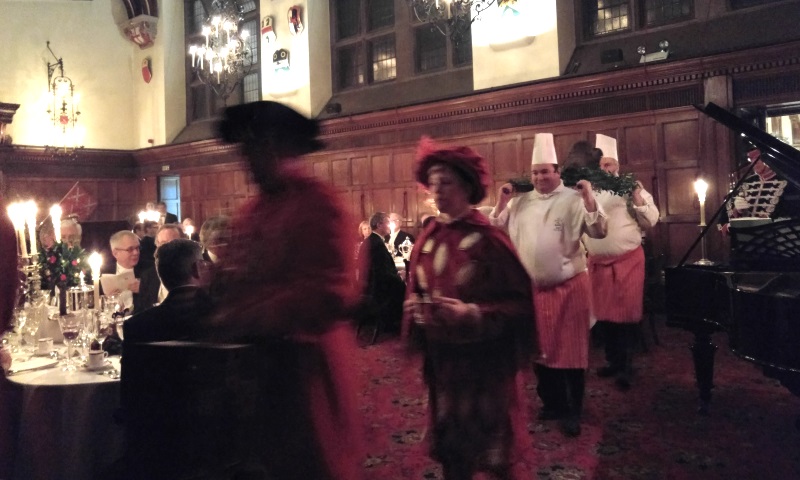

Court Ladies' Dinner
October 2015, Cutlers' Hall, London
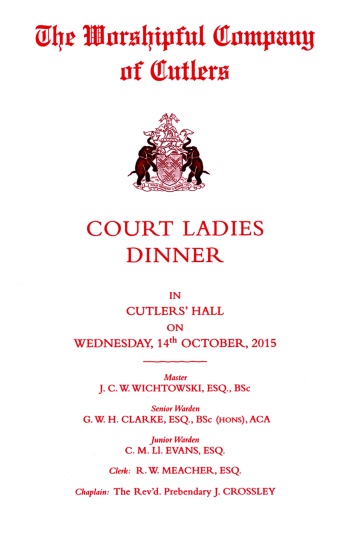
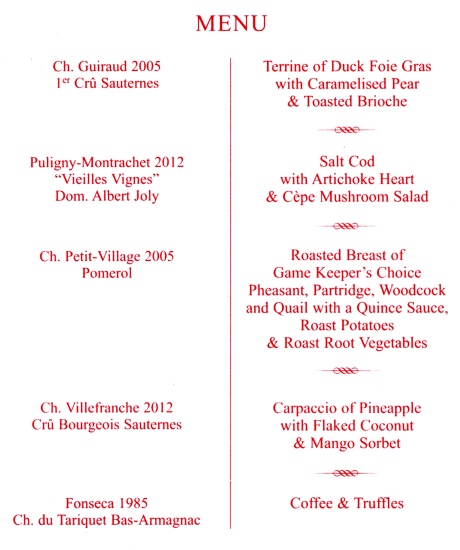
THE CRESWICK FRIEZE
The delicate terracotta frieze which decorates the façade
of Cutlers' Hall is a feature that is admired by many a passer-by. The
Company commissioned Benjamin Creswick (1853-1946) to model the frieze for
the newly built Hall in 1887. Creswick grew up in Sheffield and served a
short apprenticeship as a knife-grinder, but illness prevented him from
pursuing this unhealthy and potentially hazardous occupation. His doctor
encouraged him to take up sculpture instead, and after producing a bust of
John Ruskin in terracotta Ruskin soon took him under his wing.
In total there are thirty-three figures in the frieze depicting the four
main facets of the cutlers' craft, forging, grinding, hafting, and
finishing. The first panel depicts the forgers at work and the figure on the
far left can be seen plunging a pair of hot scissors into the hardening
trough. The next is forging scissors and to his right is a man at the
bellows, heating the iron and hardening table knives. The fourth and fifth
figures are the maker or 'smith' and the 'striker' forging table knives, and
approaching them is a man bringing a bundle of steel into the smithy.
The next panel illustrates the grinding process. First we see a man taking
away a box of finished knife blades from the grinding wheel whilst an old
man sits polishing or 'buffing' the next batch. The boy to his right is
glazing the blades and holding them up to see if the stone marks have all
been removed. Then we see two men, one hewing the grindstone and the other
grinding. The next man is setting blades prior to putting them on the
grindstone and another is remonstrating with him, possibly over the
non-payment of his 'natty' or trade union contribution. To their right we
see a young man approaching the grinding wheel with a box full of new work,
followed by two older men carrying a large grindstone.
The third panel portrays the hafters preparing knife handles and fitting
them to the blades. The first man is standing by his workbench filing a
handle. The next man is filling handles with compound prior to attaching
them to the blades. A young boy, who has brought his father's dinner, stands
beside him watching intently what is going on. Next is a figure seated at
the glazing frame polishing a knife handle, or 'dollying', as cutlers would
have called it. After him there is a man filing a handle at his workbench.
To his right stands a man who appears to be giving words of advice to an
apprentice engaged in drilling holes in the handles.
A second youth can be seen scraping or 'shaving' knife handles with a piece
of flat steel. Next to him a man is riveting handles, whilst his neighbour
is wiping off the finished work and holding it up to the light to see if it
is true. The fourth and final panel begins with an old man lotting scissors
at his bench. Then we see the scissors hardener reaching for some tongs and
blowing the bellows with the other hand. Standing next to him is a little
boy poking the fire. Alongside him is a man boring the scissors and turning
the lathe with his feet. Standing to his right is a man glazing the
scissors, and next to him is the scissor filer. The last figure is finishing
off' the scissors and testing that they are in working order before they
leave the workshop.
The frieze is a lasting example of Creswick's skill as a sculptor, and the
superlative detail of his work continues to attract the eye. This summer,
the façade of Cutlers' Hall has been cleaned, with Creswick's frieze being
restored to its full glory.

Court Ladies' Dinner
October 2014, Cutlers' Hall, London
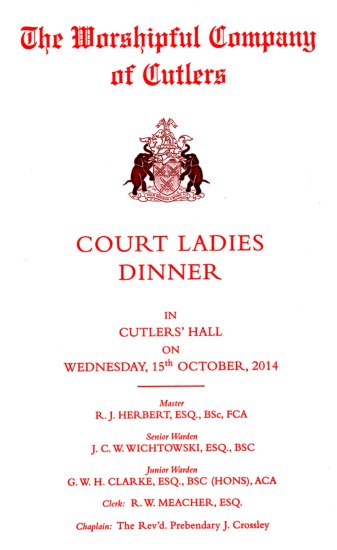
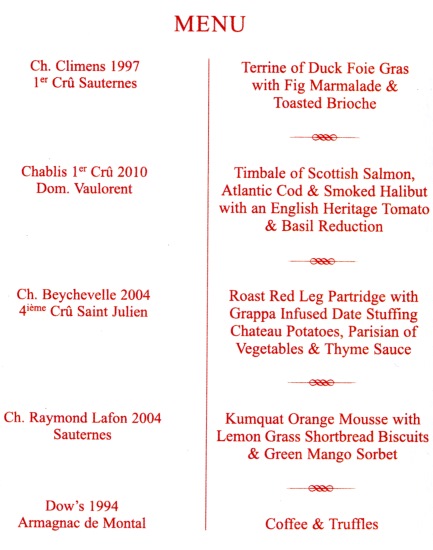
HISTORY OF THE SITE OF CUTLERS' HALL
Following the destruction of the Royal College of
Physicians rented premises at Amen Corner during the Great Fire of London,
the College met in Fellows' houses whilst raising funds for a new building.
The first institutional home of the College was provided by a new building
designed by Robert Hooke, which was erected on this site and opened in 1675.
The building was conveniently located next door to Newgate Prison, which
provided a ready supply of cadavers for dissection. It was arranged around a
courtyard with public rooms occupying the central section and apartment
wings for letting on each side. Entry to the courtyard was by means of an
archway beneath a large octagonal dome housing an anatomy theatre. The
theatre was funded from a gift made by the London merchant and financier Sir
John Cutler (1607 — 1693), and a model thereof is currently on display in
the Hunterian Museum at the Royal College of Surgeons. Statues of Cutler
(who had no connection with this Company) and Charles II by the Flemish
sculptor Arnold Quellin decorated the building, and these are now in the
collection of the Guildhall Art Gallery.
In 1680 Henry Pierrepont, Marquess of Dorchester, presented his magnificent
library to the College, on the condition that the collection should never be
broken up or sold, the books should remain in the same order, and that the
College would build a suitable library to house them. The College also
boasted a public gallery known as the Long Room, lined in Spanish oak
panelling donated by Baldwin Hamey. Some of this panelling decorates the
Censors Room in the present College building situated in Regent's Park.
For the first time, the College had a large and elegant home, which
attracted visitors and tourists, but the City location gradually grew less
desirable. The diarist John Evelyn wrote that it was a pity the College was
built 'in so obscure a hole'. Public life and fashionable society were
moving west, away from the crowded City and in 1799 the College decided to
follow suit. After the Physicians left, Hooke's College was used as a
foundry. The Cutlerian Theatre was demolished in 1866 and was later replaced
by our Hall in 1888 when the Company moved from its former home in Cloak
Lane.

Captain Boot's Dinner
July 2014, Cutlers' Hall, London
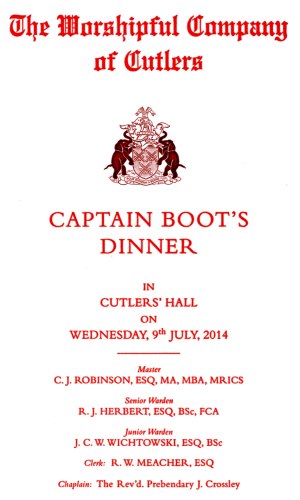
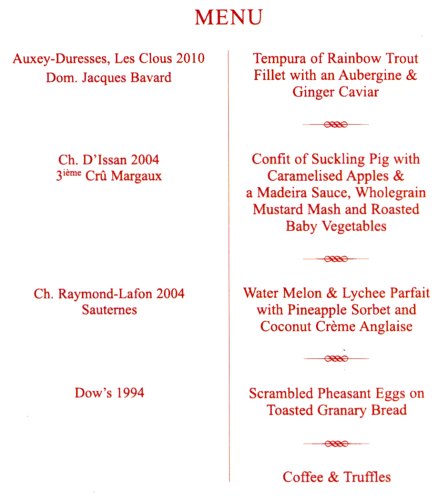

The Feast of the Boar's Head
December 2013, Cutlers' Hall, London
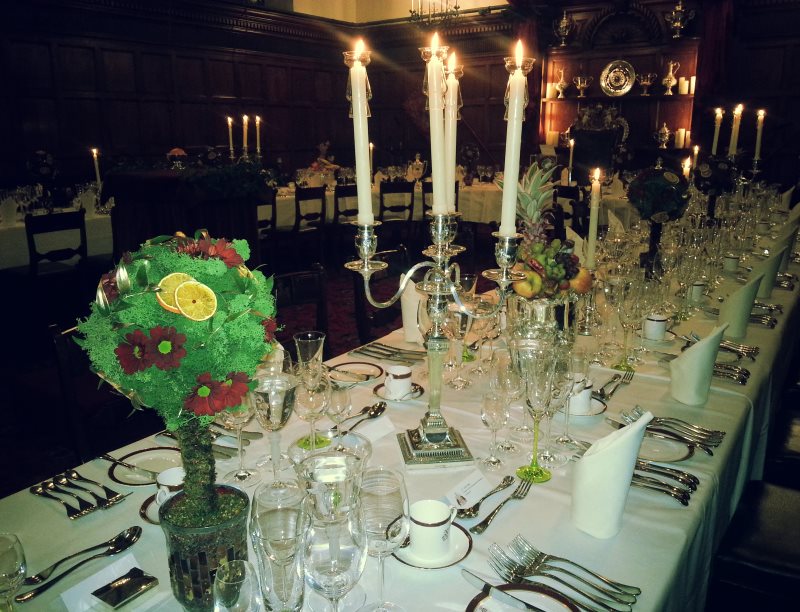
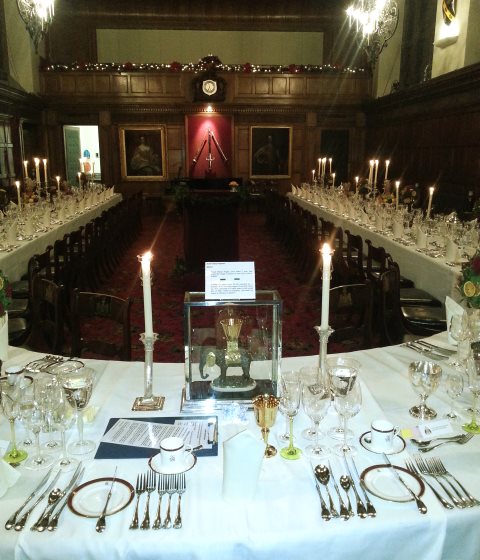
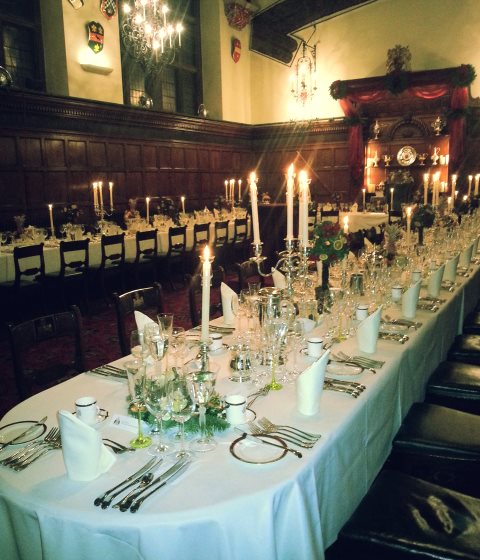
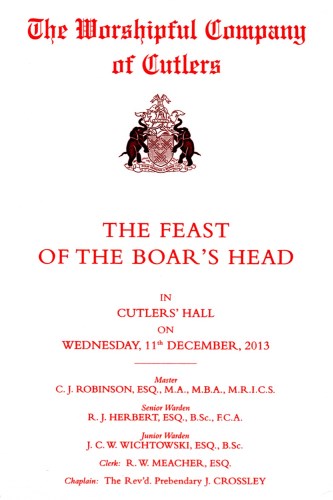
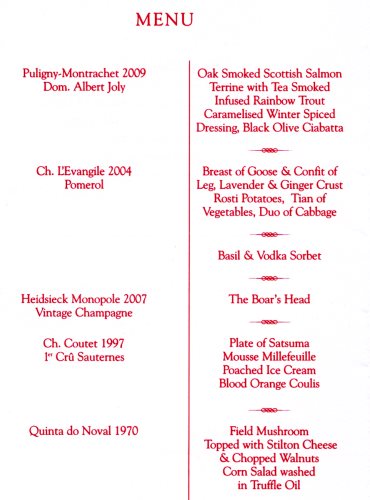
THE FEAST OF THE BOAR'S HEAD
It is said that the tradition of feasting with a boar's
head during the winter solstice arose because the Nordic god Frey, who
watched over the fertility of crops and livestock, was often symbolized by a
boar. Thus boar were often sacrificed in the hope of securing a prosperous
spring herd.
As Christian beliefs overtook pagan customs the presentation of the boar's
head at Christmas later came to symbolize the triumph of the Christ Child
over sin. However, during the Middle Ages wild boar became increasingly
scarce and — with turkey, goose and beef taking its place as traditional
Christmas fare — this ceremony eventually fell into decline.
Our own Feast is not of great antiquity. It was first instigated in 1924 by
the then Master, Sir Thomas Cato Worsfold, Bart., as an adornment of the
Company's traditional Christmas dinner and apart from the years of the
Second World War has been held in December ever since.
The pageant you will witness during dinner originated in the 14th. century
at Queen's College, Oxford where, according to legend, a certain student
once displayed great valour and remarkable ingenuity on being confronted by
a wild boar.
After a flourish of trumpets the boar's head, finely dressed and garnished,
is borne in state around the room led by the Beadle dressed in his
ceremonial robes. Behind him come a young page carrying the mustard pot,
trumpeters, soldiers, and choristers singing the Boar's Head Carol. As the
procession parades in front of the top table the Master summons the senior
chorister and rewards him with an orange. The page then offers the Master
the mustard pot, mustard having always been regarded as an indispensable
condiment to accompany wild boar. A slice is carved from the boar's head and
presented to the Master. A junior member of the Court then delivers the
Boar's Head Oration, following which the beast is removed to the kitchen for
carving.

The Stewards' Dinner
November 2013, Cutlers' Hall, London
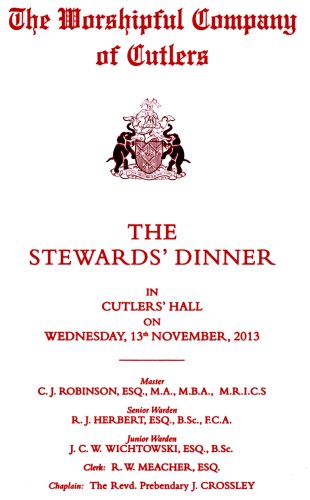
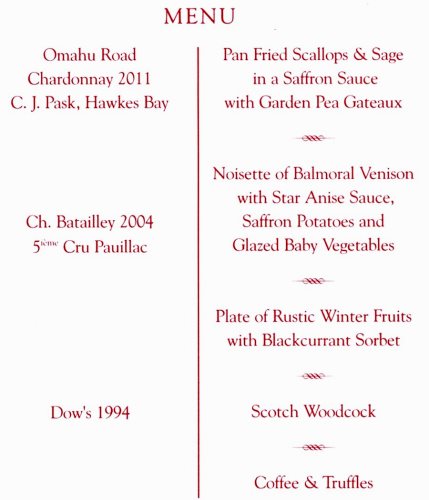

Court Ladies' Dinner
October 2013, Cutlers' Hall, London
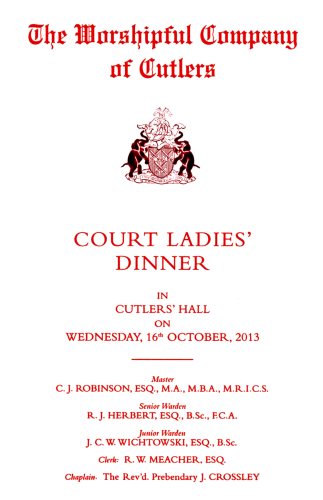
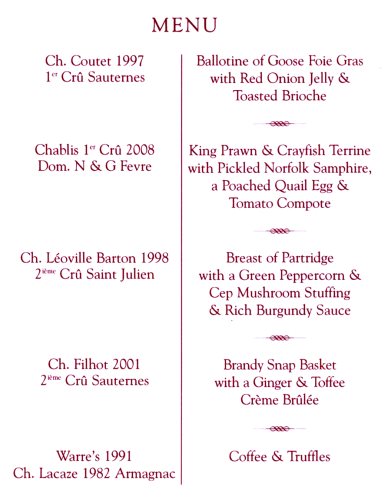

Captain Boot's Dinner
July 2013, Cutlers' Hall, London
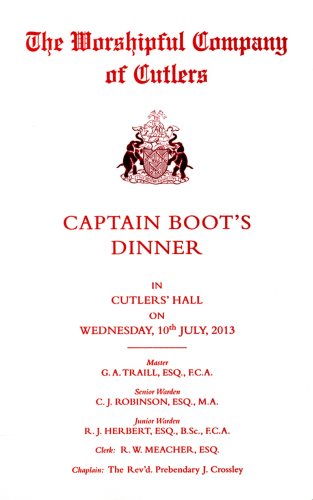
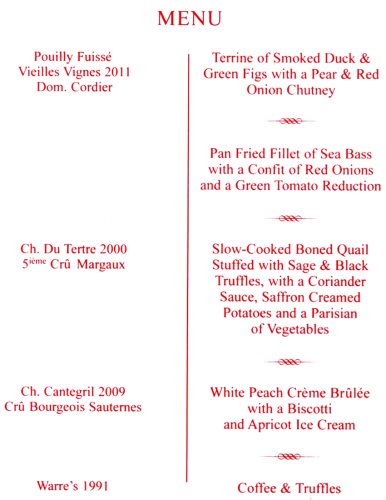

Surgical Award Dinner
Cutlers' Hall, London, March 2013
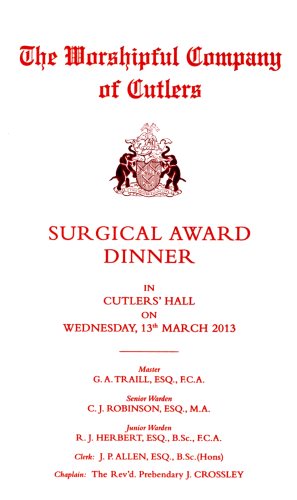
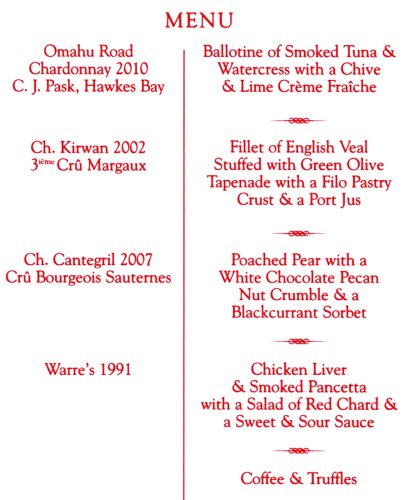

THE CUTLERS’ SURGICAL PRIZE 2013
The Cutlers’ Surgical Prize was instituted in 1981 by the
late Past Master Tony Clarke to promote innovation in the design or
application of surgical instruments and surgical techniques. This annual
award is open to anyone who has performed outstanding work in the field of
instrumentation or technical development in any branch of surgery. Entries
are judged by representatives of the specialist surgical associations, in
conjunction with the Royal College of Surgeons of England, who recommend
which of the entrants should receive the award.
This year’s prize, comprising The Clarke Medal and £1000 in cash, has been
awarded to Professor Michael Nicholson MD, DSc, FRCS and Dr. Sarah Hosgood
BSc, PhD of the University of Leicester, who have jointly developed a system
of ex-vivo normothermic perfusion for renal transplantation.
THE CUTLERS’ FELLOWSHIP IN SURGERY
The Cutlers’ Fellowship in Surgery was instituted to mark
the new Millennium. The Fellowship is open to recently qualified surgeons at
St. Bartholomew’s and The Royal London Hospitals, who wish to visit
hospitals outside the United Kingdom, in order to study surgical techniques
that are relevant to their chosen specialism.
This year a Fellowship has been awarded to Mr. Martin Griffiths BSc(Hons),
MBBS(Hons), FRCS(Ed) FRCS(Gen.Surg.), a locum consultant trauma and vascular
surgeon, who intends to visit the R. Adams Cowley Shock Trauma Centre in
Baltimore to study techniques for the treatment of penetrative injuries and
injury prevention.

Jubilee Luncheon
Cutlers' Hall, London, June 2012
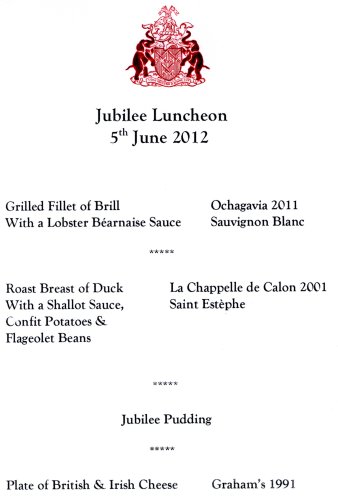
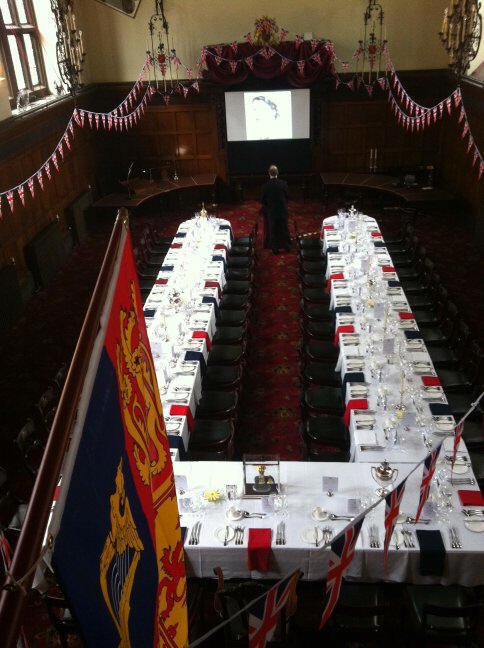

Surgical Award Dinner
Cutlers' Hall, London, March 2011
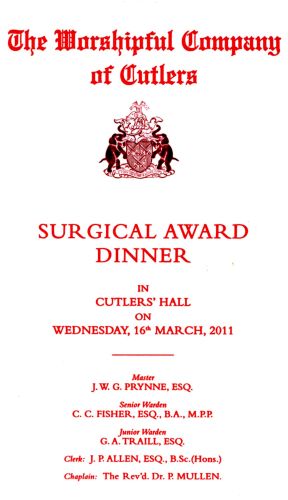
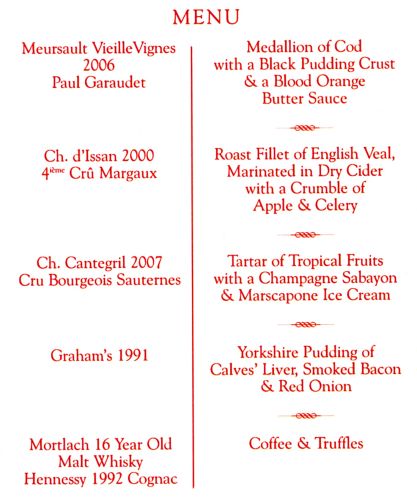

THE CUTLERS’ SURGICAL PRIZE 2011
The Cutlers’ Surgical Prize was instituted in 1981 by the
late Past Master Tony Clarke to promote innovation in the design or
application of surgical instruments and surgical techniques. This annual
award is open to anyone who has performed outstanding work in the field of
instrumentation or technical development in any branch of surgery Entries
are judged by representatives of the specialist surgical associations, in
conjunction with the Royal College of Surgeons of
England, who recommend which of the
entrants should receive the award.
This year’s prize comprising The Clarke Medal and £1000 in
cash, has been awarded to Professor Norman Williams MS FRCS FMed Sd, and Mr.
Lee Edwards BSc FRSA, who have jointly invented a circular stapling device
and associated instrumentation to effect innovative techniques for ultra low
sphincter saving resection, and stoma trephine reinforcement to prevent
herniation.

Captain Boot's Dinner, July 2010
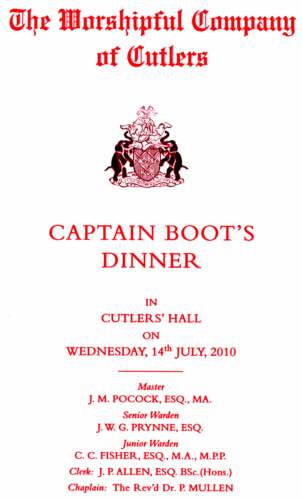
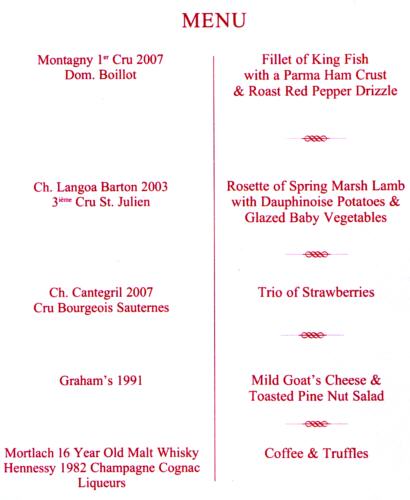
EXTRACT FROM THE WILL OF CAPTAIN FRANCIS GEORGE BOOT
By his Will CAPTAIN FRANCIS GEORGE BOOT, who served the Office of Master of the Company in the year 1894, gave the residue of his Estate upon trust for his Wife during her life, and after her death, ‘UPON TRUST [in the words of his Will] for the said Worshipful Company of Cutlers, of which Company I have been a member many years, and the Society of the members of which I have spent many agreeable hours; AND I declare that this trust is for the said Company in its corporate capacity absolutely for it to dispose of the property subject to the trust exactly as it may fancy, free from the control or interference of any Government, or Parliamentary Commission or body, or any other body or individual whatsoever or whomsoever; and while expressly declaring that I attach no trust conditions or directions to such a trust, I express a hope; First, that the income arising therefrom, or a part thereof, may be applied in defraying the cost of a banquet to be given annually in the Hall of the said Company on the 29th day of July (my birthday), or as near thereto as convenient, and to be known as “Captain Boot’s Dinner” when the Master, Wardens, Court of Assistants, and Livery of the Company, with or without visitors, will dine together and drink to my memory; and that at such banquet an extract from my Will may be read, and that the viands, wines, and appointments shall be the best of their kind, and that hospitality be dispensed with no niggard hand; and secondly that any balance of Income over, after defraying the cost of such banquet, be devoted to helping respectable, intelligent, and promising boys needing assistance in acquiring a knowledge of foreign languages, by sending them to France, Germany, Russia, Spain, Italy or elsewhere abroad.’
![]()